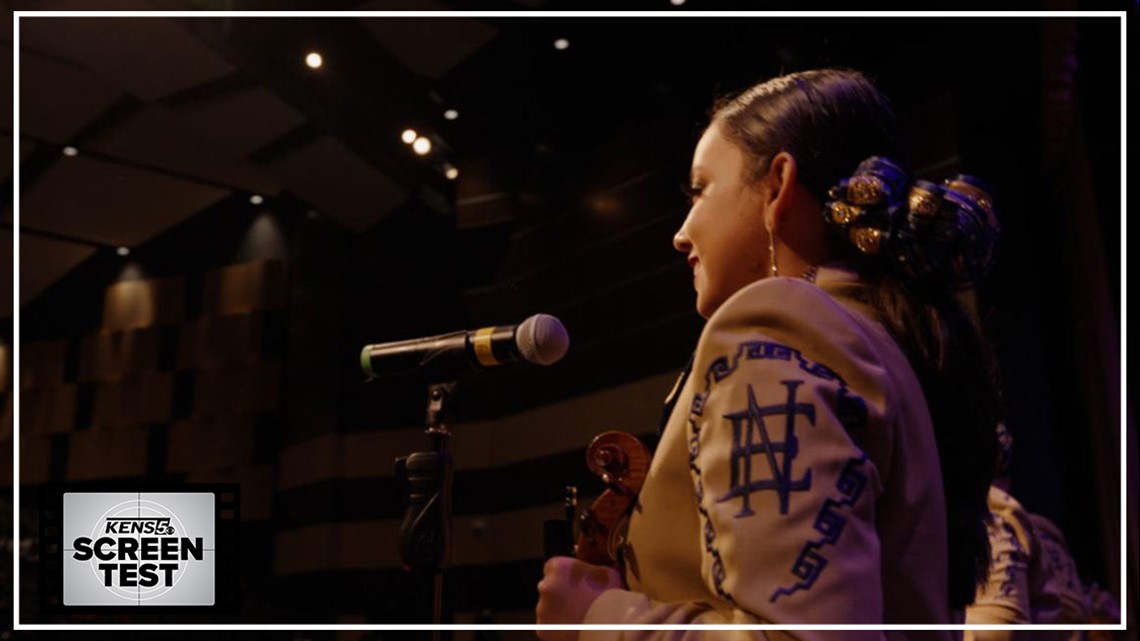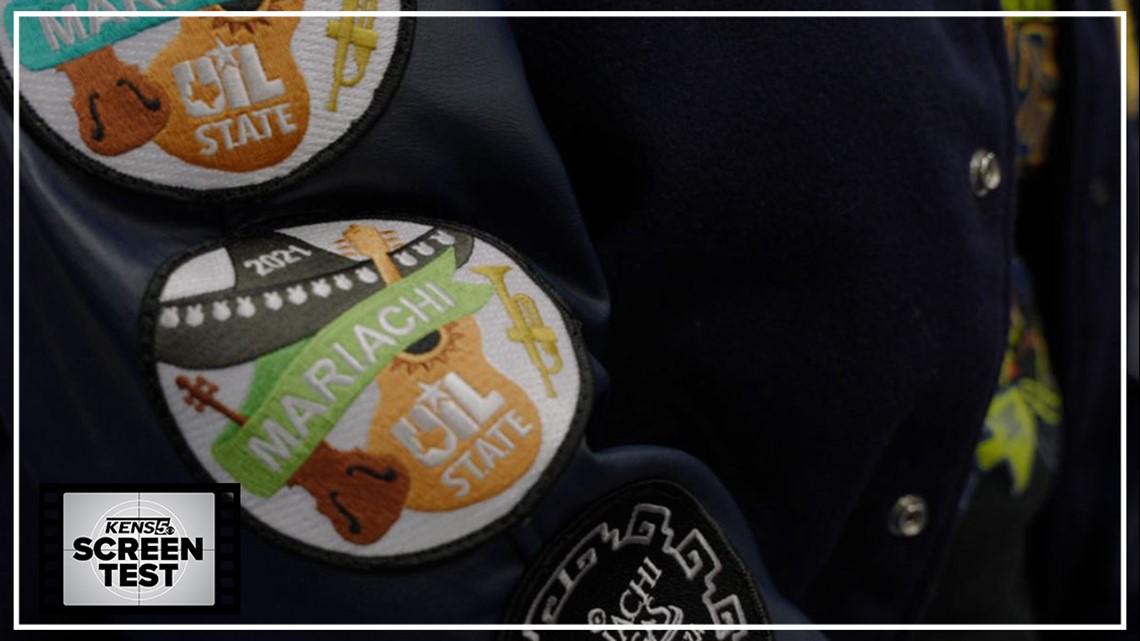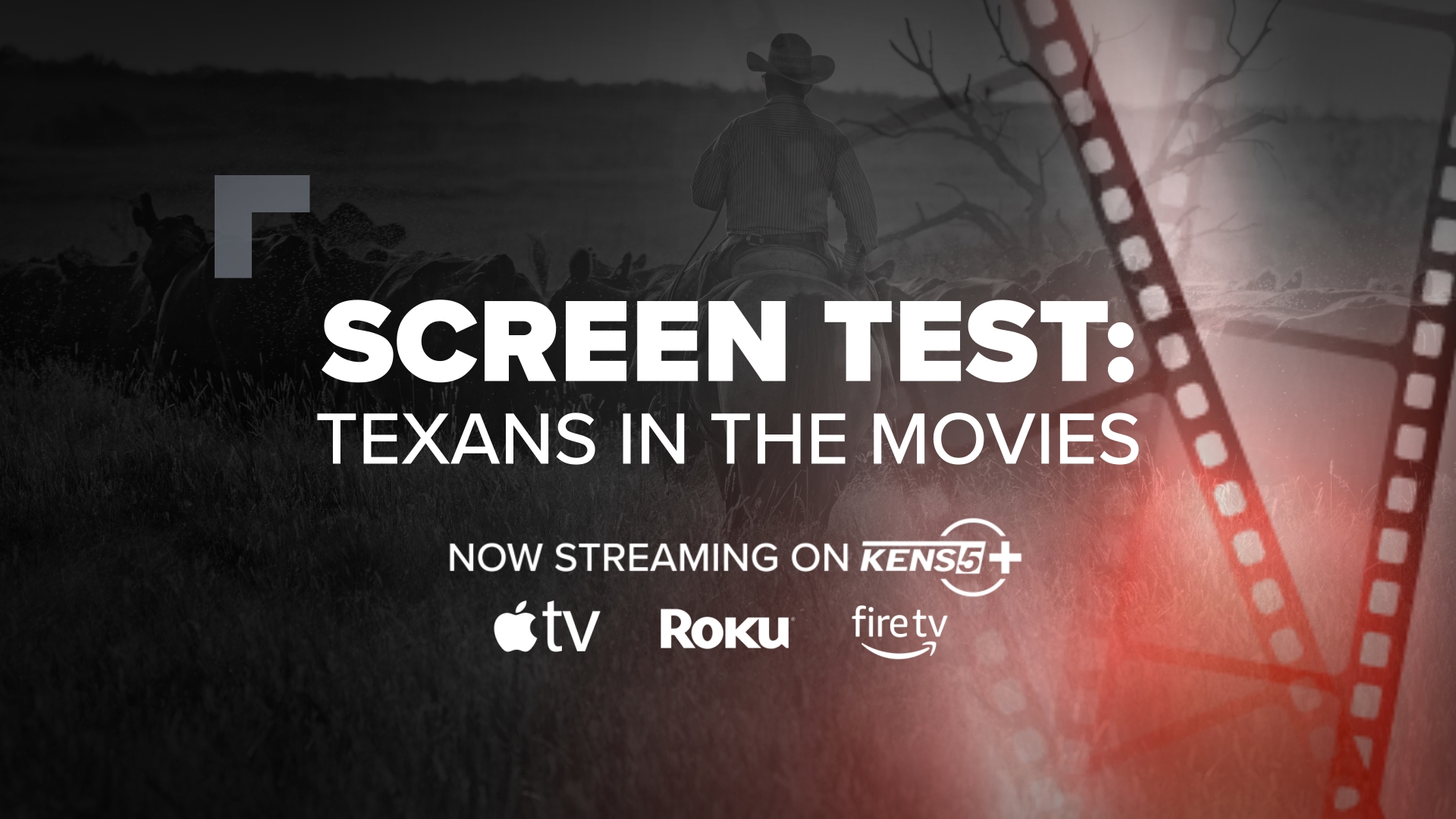SAN ANTONIO — Note: This interview was conducted in 2023, ahead of the movie's Texas premiere at the SXSW Film & TV Festival. It's been lightly edited upon its arrival on Netflix this month.
When you think about sports underdog stories set in Texas, you'd probably imagine football players suiting up to hit the gridiron under Friday night lights. "Going Varsity in Mariachi," true to its name, is not that movie.
But the athletes here still wear letter jackets, get up at 5 a.m. for practice, and endure the peaks and valleys of a long season regardless. Such is the clever, crowdpleasing and culturally specific view that directors Alejandra Vasquez and Sam Osborn have brought to "Going Varsity in Mariachi," a movie that spotlights the humanity, history and diversity of a region that hasn't always gotten its fair shake on the big screen.
The film made festival rounds in 2023, debuting at Sundance in January before screening at True/False that March. But its selection at South By Southwest, where it also screened last year, was extra special: It allowed this Texas movie to screen before Texas audiences already attuned to the richness of the Rio Grande Valley, and the people who live there.
Vasquez and Osborn spoke with KENS 5 before the Texas premiere of "Going Varsity in Mariachi," discussing their motivations, the logistics of shooting during a pandemic and "going back to high school" for a whole year.
(This interview has been edited for clarity and brevity.)
KENS 5: I'm curious what happened first: Did you know you wanted to tell a story about mariachi competitors first and go from there, or did you have an awareness of these kids at Edinburg North and that sparked the idea?
Sam Osborn: It was first we wanted to make a movie about competitive mariachi, because it seemed like there's just a lot of intersections of contrasting ideas: Texan politics around immigration are very fraught; there's a huge demographic of Mexican-American families along the border in this region; and this traditional music being funded in public schools, traditional Mexican music. It just felt like a lot of really interesting intersecting ideas. And then we found the school.
Alejandra Vasquez: Yeah, I think for us as filmmakers, we just heard about the story and we're like, "Oh, this is music, this is coming of age, this is competition." It just immediately connected to us.
How did you go about picking a mariachi team to follow?
Osborn: We called a bunch of teams. Actually all the teams that are in the film – so Roma, La Joya and ENHS – we spoke to their coaches. I think we thought it first would be a question of access, of which school district we could get into first. But we actually end up getting into almost all the school districts we reached out to. The schools were very open to being filmed, I think because they love these programs. (For them) it wasn't all about winning trophies. They were going through the same coming-of-age experience as we wanted to show in the film. We didn't want to make just a pure competition film, and I think we saw that the program lent itself to that idea.
Vasquez: We really connected with Abel Acuña, the coach of Mariachi Oro. He just had a lot of the philosophies, the ethos in the way that he embodied high school mariachi and the way that he was interested in passing it down to his students in a way that wasn't just, as Sam was saying, all about winning trophies. It was way more like, OK, how can mariachi help you get to the next step in your life, even if you don't become a mariachi?


With documentaries like this, I always wonder: How much time do you spend getting comfortable with these kids before the cameras start rolling? How do you break the ice?
Vasquez: Sam and I moved down to the valley to film. We lived in the valley for nine months, we filmed for like an entire year. I think they just got used to us. (laughs) We spent so much time in the classroom, we spent so much time in their homes, we spent so much time with their families. I think it was really just us getting there and them getting used to us and, after a certain point, it was like the cameras didn't exist.
Osborn: We also did spend a lot of time off-camera. I think what you were just saying did happen; there was a little bit of the walls went up at first with a lot of the kids, with their families. We realized like, "We need to hang around, we just need to be here and show them we're not just trying to extract a story from them and leave." We wanted to be a part of their program, their lives for the year.
I can't imagine how many hours of footage you racked up. What's it like day to day when you're following this team and you don't know how your story is going to end, or how much success they'll eventually find?
Osborn: It's only Alex and I who moved there; we would fly in a crew as much as possible, mostly in parts of the year that we knew were going to be more elaborate to film. So competitions or the lead-up to competitions or auditions. But day to day, it was mostly Alex and I first going into class. We went to their class every day, the mariachi class and the rehearsals. That was the kind of thing we always shot. And then we were always just texting the teens, asking if we could hang out with them after school, before school, on the weekends, (seeing) what they were up to. We kind of went back to high school. We were staring at our phones waiting for the people on the team to get back to us. It was a lot of filming (during) weird hours. It was kind of hard to have a routine because we would always have the mornings off because they were in school. But when they got out of school, we would be like, "OK, we have to do something now." We ended up filming like 300 hours, which is a lot.
Vasquez: We had no idea what was going to happen. The team started out and they had just gone through their COVID year, they had a lot of new players and a lot of young musicians. When it got around to qualifying, we were really scared that the team wasn't even going to qualify for state. So yeah, we had no idea. But we saw them throughout the course of the year improve.
You're clearly still filming when COVID is going on, masks are prevalent throughout. Did you work with a smaller crew than you normally would have, and did you have to work with the school to make sure you all were on the same page as far as precautions?
Osborn: Part of our proposals to the school districts included COVID safety training, wearing masks, vaccinations—all that kind of stuff that I think most film sets do. I don't think we limited our crew any more than we would otherwise; we were concerned about COVID, but we were more worried about the awkwardness of going into someone's house with like a crew of seven. I think keeping it to two or three all the time was going to happen anyway. The hurdle was, you know, the kids were wearing masks. Sometimes we wanted to see the kids singing and the emotion of them singing. I think that's why we focus on so many scenes outside of the classroom, when it was just one-on-one or two or three kids. Then they weren't wearing masks, they weren't in school, and we can directly see their faces. I think we make up for it sometimes with the mask thing by having as many lower-third indicators of who's who, probably more than usual.
Vasquez: Also we really stayed in the mariachi classroom, for the most part. You see in the film that we go through two different classes and we're in the hallways and we're in the school, but I think we also just kind of limited ourselves to the classroom, just to make sure that we were being as safe as possible. I think it was a bigger challenge for the team itself. It's a music program, you know, they're playing trumpets, they're singing. I think when omicron hit, it was a little scary if the team was gonna go on or not, because we weren't really sure.
One of the things I kept coming back to was it's a tough task for them to participate in this, because they're not just worried about how they're going to perform on stage for judges, but now in their minds they're thinking about, "How are we looking on camera, how do we sound on camera performing?" Was that in your minds as well?
Osborn: I think they worried about it in the macro sense, like, "If we have a bad year, it's going to be immortalized forever." But I think in the moment-to-moment stuff, it was just sort of forgotten once they realized we were going to be rolling all the time and that we were going to have hours and hours of footage for a 100-minute movie. But still there were some times when someone accidentally said who they had a crush on and they're like, "Wait, wait, wait, wait. You can't use that." (laughs)
Vasquez: They would tell us like in their microphones. (laughs)
"Going Varsity in Mariachi" has this golden elevator pitch of classic sports underdog tale that gives you a chance to play with those tropes through this very specific lens. I specifically want to ask about the participation of Roma's Nuevo Santander and La Joya's Los Coyotoes as well, because for all intents and purposes, they're the quote-unquote villains. Even though you touch on the fact the only real villain is socioeconomic differences and gaps in budgets. What was the conversation with those schools like when you approached them about their participation?
Vasquez: We wanted to include them because we wanted to show how big mariachi is in the valley, and we wanted to show these different aspects to mariachi education. With Roma, we told them, "You guys are the best, you're what it looks like to have a program that is well-resourced and well-funded." For La Joya it was like, "You're the first mariachi program, you were the first program to start in the valley. We want to show this tradition of mariachi and how you are revitalizing it again," specifically with that coach. And we knew that we didn't want to paint any other team like villains, because that's not the philosophy of Abel. I think he would be really upset if that's how it came across because that's not how he leads his team. He's telling his team, like, "We clap for everybody else, we champion everybody else. We look up to these programs as well."
Osborn: To that point, we showed Abel a cut just to make sure we had everything right accuracy-wise a couple months before it screened at Sundance, and that was one of his notes. I think what we did accidentally was we let that genre format kind of dictate Roma and La Joya's portraiture at first, and they did kind of come off, because of the competition, as the villain. And he was like, "That's the farthest thing I want to present our team as." He gave us that note of like, "That's not necessarily how it is. So let's figure out a way to make them really not seem like villains, but as peers."


You also worked together on "Folk Frontera," the short film that won at SXSW last year, and also centering on the border region. What is it about the life and culture in that part of the country that appeals to you both as storytellers?
Vasquez: I'm from a really small town in west Texas, but my family is from Juarez and El Paso, so I've always felt a deep connection with the border. I've always felt that the way that the border is portrayed in movies and in stories is typically fraught, you know, it's typically a depiction of violence and of trauma. But I've known it also as a place where there's a lot of beauty and culture. And it's a place of music.
Osborn: Most a lot of my family's from the Tucson area, so that borderlands area. I think we're both drawn to this idea of the borderlands being this kind of culturally porous region so that there's this big overlap. When you're in the Rio Grande Valley, it really feels like you're in an extension of Mexico in this strange way. That's what we're getting at with "Folk Frontera," was this sort of magical third country that exists in that in-between. It's just something really special and unique, and I think that also exists in the Rio Grande Valley in this movie.
One of the trends that I've noticed in the last couple of years is we've seen more and more documentaries, a lot of them focusing on high school kids, that are in that region in Texas, and about the struggles they go through grappling between these two different identities. It goes to show that the monoloth is not a thing. It's like all kinds of aspects of that culture is really interesting.
Vasquez: We're so happy to be part of these films that are coming out right now that are touching on these topics, because I think it's important for young people to see these stories of people that look like them. And to know that their stories are valuable and meaningful.
Your movie has been making the rounds at Sundance and True/False earlier this month as well. I imagine there's something extra special about it debuting here in Texas.
Osborn: Yeah, if anyone's gonna get this movie, it's a Texas audience. If anyone's gonna feel it, feel the joy of it, understand the the things that are going onscreen – all the textures of the outfits – it's Texans. We were at a big theater at True/False, and the audience is cheering. They feel like they're watching them live, it's a fun theater to be in. We've seen this movie like hundreds of times now, but when it's playing in a theater like this, we love to just sit in there and see how the audience reacts.
Vasquez: I couldn't imagine a better place to have our Texas premiere.
>MORE SXSW COVERAGE:



